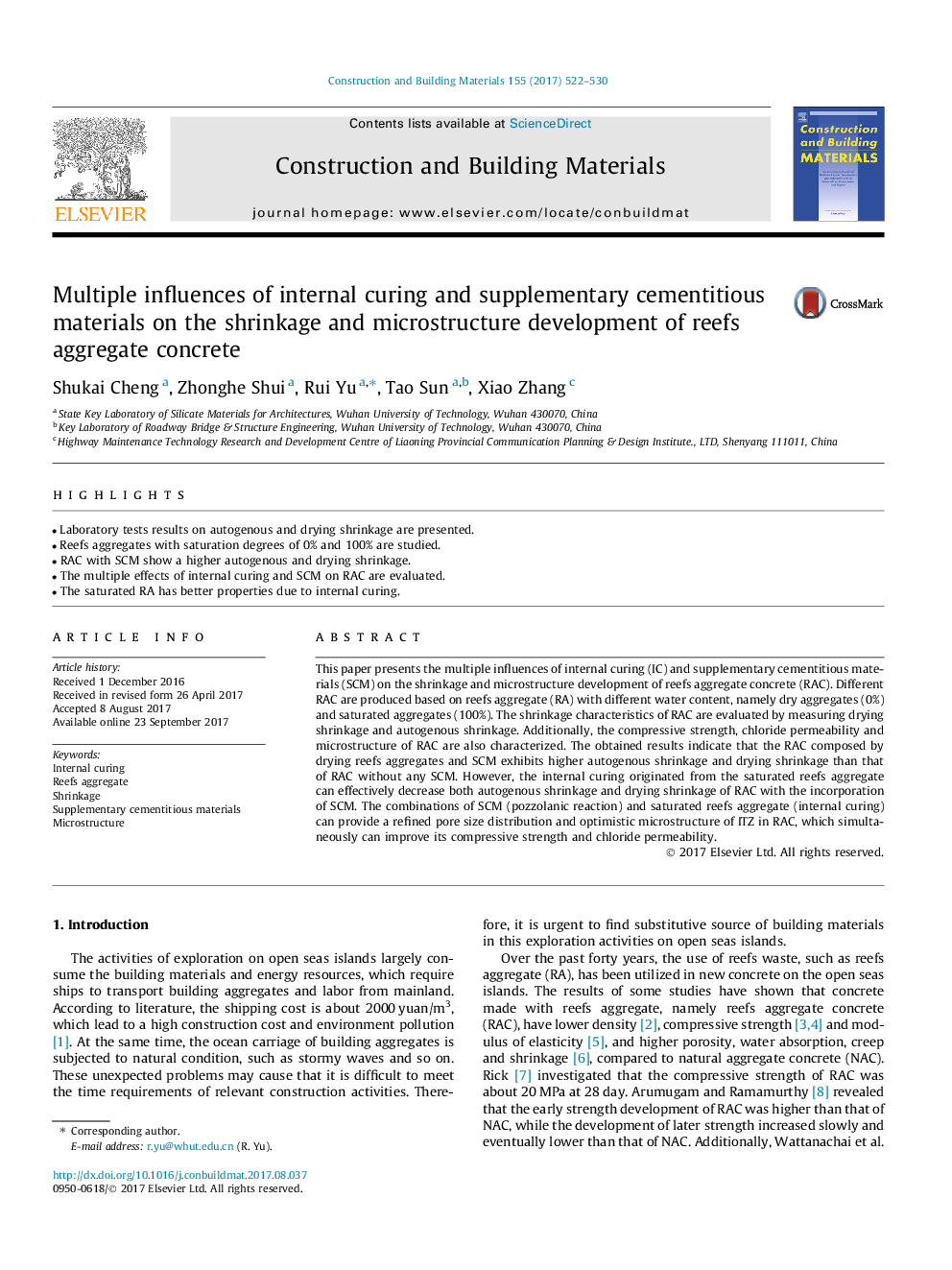| Article ID | Journal | Published Year | Pages | File Type |
|---|---|---|---|---|
| 4918098 | Construction and Building Materials | 2017 | 9 Pages |
Abstract
This paper presents the multiple influences of internal curing (IC) and supplementary cementitious materials (SCM) on the shrinkage and microstructure development of reefs aggregate concrete (RAC). Different RAC are produced based on reefs aggregate (RA) with different water content, namely dry aggregates (0%) and saturated aggregates (100%). The shrinkage characteristics of RAC are evaluated by measuring drying shrinkage and autogenous shrinkage. Additionally, the compressive strength, chloride permeability and microstructure of RAC are also characterized. The obtained results indicate that the RAC composed by drying reefs aggregates and SCM exhibits higher autogenous shrinkage and drying shrinkage than that of RAC without any SCM. However, the internal curing originated from the saturated reefs aggregate can effectively decrease both autogenous shrinkage and drying shrinkage of RAC with the incorporation of SCM. The combinations of SCM (pozzolanic reaction) and saturated reefs aggregate (internal curing) can provide a refined pore size distribution and optimistic microstructure of ITZ in RAC, which simultaneously can improve its compressive strength and chloride permeability.
Related Topics
Physical Sciences and Engineering
Engineering
Civil and Structural Engineering
Authors
Shukai Cheng, Zhonghe Shui, Rui Yu, Tao Sun, Xiao Zhang,
